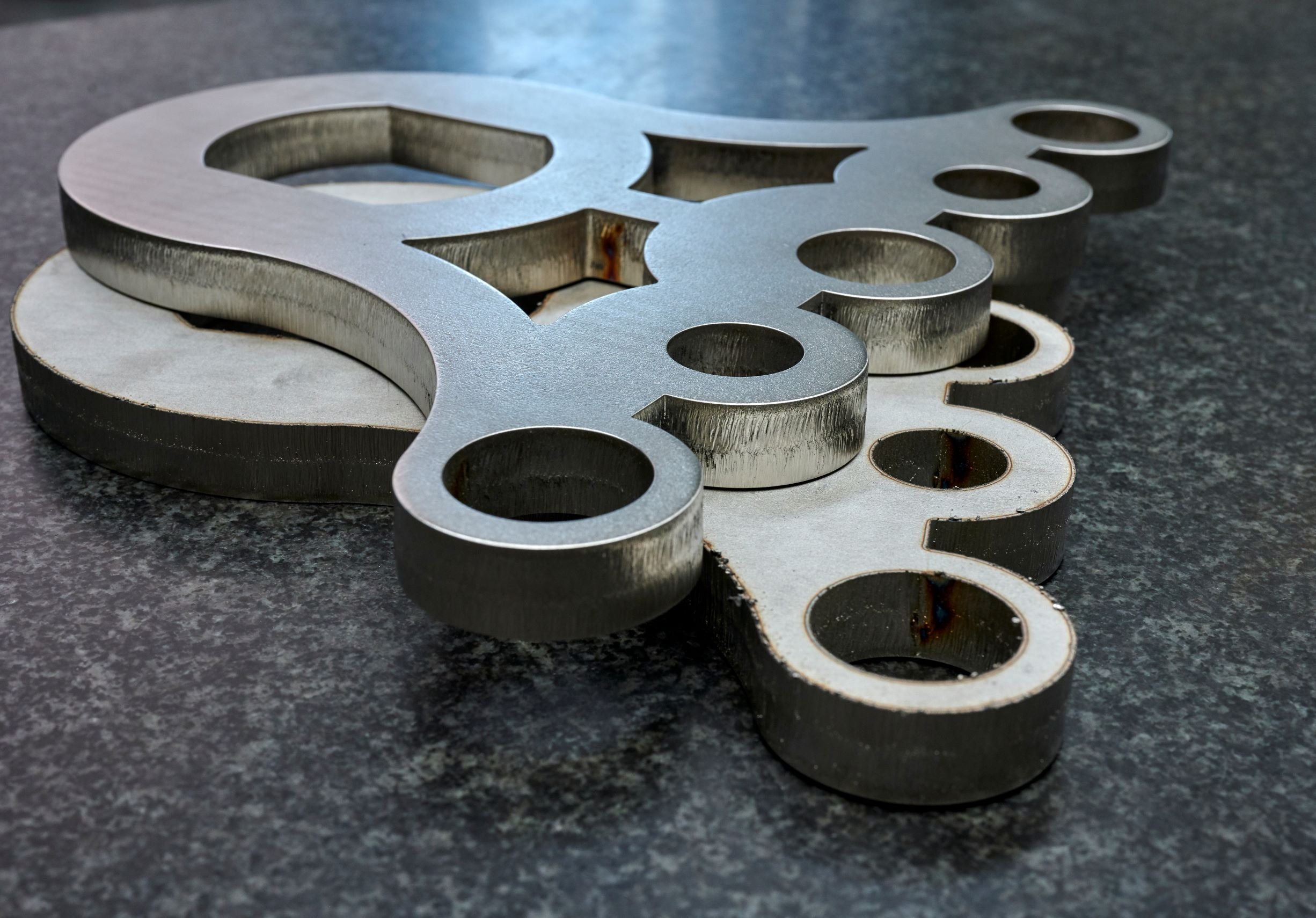Flame cutting or cutting torch cutting usually refers to autogenous flame cutting or oxyacetylene cutting. In this process, the cutting torch heats the steel by means of a flame until it has reached its ignition temperature. With added oxygen, the steel burns, and the heat from the combustion process in turn heats the lower-lying material to the ignition temperature. This allows the process to continue autogenously, i.e. automatically, even in deeper layers of material. The iron oxide from the combustion becomes thin and is blown out of the joint with the cutting oxygen.

Flame cutting produces slag and burrs
Autogenous flame cutting is used for unalloyed and low-alloyed steels with medium to large sheet thicknesses. It is also popular because of its cost-effectiveness for sheet thicknesses from 50 millimeters; above 250 millimeters there is currently no alternative. However, the process is unsuitable for high-alloy steels and many other materials.
The high energy input also leaves clear traces on the firing parts. Two types of undesirable residues can be distinguished: Slag and burrs.
The slag hammer can remove slag quickly and effectively
Slag consists of solidified iron oxide. It sometimes adheres more or less firmly to the workpiece and can be knocked off relatively easily. This can be done manually in some cases, but it is not entirely safe. This is because residues of the slag can jump around uncontrollably when it is knocked off. Employees therefore need protective clothing. In addition, the workpieces have to be turned over to remove the slag, because the slag always forms on the underside of flame-cut parts. There is a certain risk of accidents here, especially with large and heavy parts.
It is safer and faster to remove the slag in a deburring machine with the slag hammer. The flame-cut parts can be inserted into this machine as they were cut. Hammer tools fitted with pins then knock off the slag quickly and reliably.

Flame-cut parts require powerful deburring machines for deburring
In addition to the slag, burrs are also produced during flame cutting. These are molten steel that has escaped from the cutting joint with the slag. Unlike the slag, however, the burrs adhere firmly to the workpiece. Due to the high energy input, they can reach a size of several millimeters. For this reason, flame-cut parts require correspondingly powerful deburring machines for deburring. They are usually equipped with grinding belts and grinding rollers. Brushes in a downstream machine unit are then used to round the inner and outer edges and still remove the smaller secondary burr.
Slag and burrs can be removed in one step
Slag and burrs can be removed from the fired part in one process with the right deburring machine. The slag hammer first removes the slag and the somewhat more easily adhering burr. Then a grinding unit removes the residue from the surfaces of the fired part. The edges are rounded with the downstream rounding units. The flame-cut parts machined in this way on both sides can be installed or used in any position.
An overview of the most important leveling techniques
What are the different leveling techniques and how can new methods help to optimize the leveling process?



